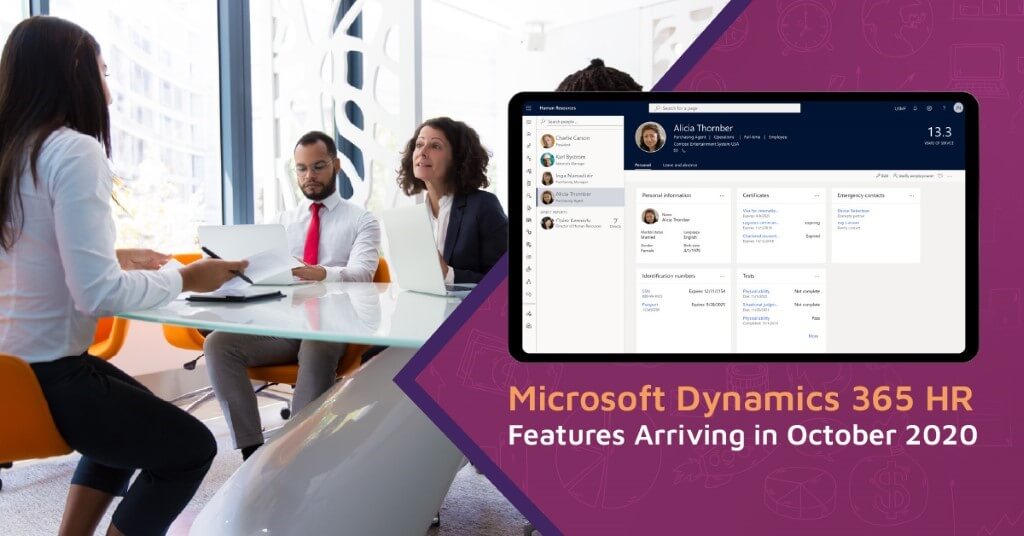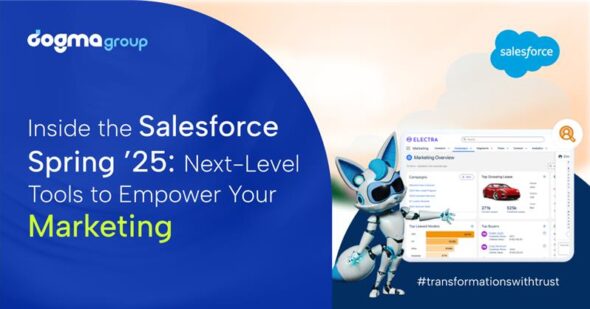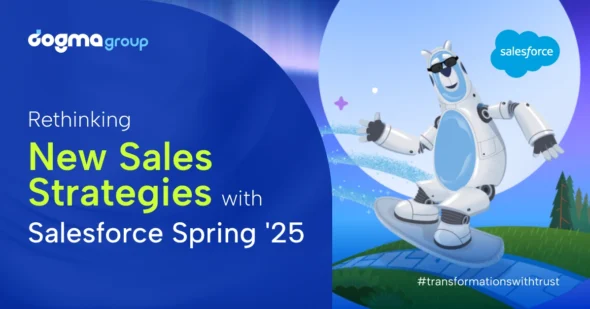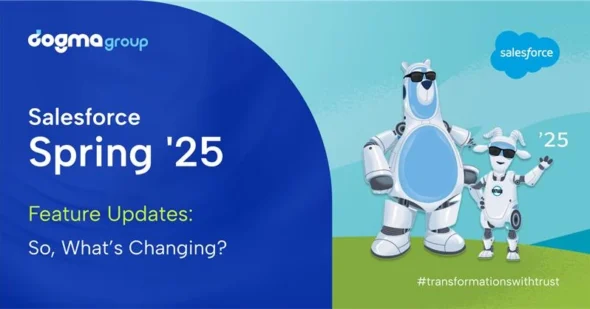“50% of recruiters see problems in moving candidates through the hiring process, while 44% cite hiring managers reviewing resumes as reasons for slowing the process down.” – a Recruiter Nation study.
Flexible workforce, employee self-service, and AI-powered hiring – these are key trends of the modern workplace. To deliver business continuity in the changing landscape, HR needs to pace its steps quickly and shift from traditional hiring to an advanced onboarding approach.
Microsoft has continued to envision HR professionals as the ‘workplace enablers’. With the new October 2020 release, Microsoft is taking a step further in refining its Dynamics 365 HR application to help HR leaders rethink, reshape, and re-evaluate their processes.
Let’s dig in to explore all the new features and enhancements coming to Dynamics 365 HR:
1. LinkedIn Talent Hub integration with Dynamics 365 HR to streamline the hiring process
As part of Microsoft’s continued development to support the recently retired ‘Attract’ module, a new integration with LinkedIn Talent Hub has been introduced.
Adweek has surveyed that LinkedIn is the most widely used recruitment channel and trusted by more than 77% recruiters to find candidates. This new integration is huge as it fills the gap in Dynamics 365 HR’s otherwise comprehensive recruitment functionality and adds LinkedIn’s unique features to take it up a notch.
Once a candidate accepts a job offer in LinkedIn Talent Hub, the candidate record details will now be sent to Dynamics 365 HR. HR professionals can either choose to review the record and add more details or approve it before creating the final employee record in the system. This will play a key role in automating the hiring process – reducing both time and risk of errors.
2. Ability for managers to request recruiting new candidates
A delayed hiring process can hurt business productivity and leads to the risk of losing the right candidate simply due to inaction. Dynamics 365 HR will now empower managers to request the hiring of a new employee internally.
Managers can simply initiate a workflow through ‘Manager self-service’ or ‘Personnel management’ and submit the relevant job description. This workflow will expedite the hiring process and begin information gathering which is often the primary cause of delay in the onboarding stage.
Of course, managers can keep track of new candidate requests throughout the process.
3. Create ‘candidate records’ during onboarding directly in Personnel management
Personnel management in HR is adept at streamlining the hiring process and creating an overall efficient onboarding experience for employees. Microsoft just had to address one missing piece in the puzzle.
Previously, new candidate profiles could only be created through the ‘Attract’ module in Dynamics 365 Talent, which had its share of risks when it comes to double entries in the system. The new Dynamics 365 HR now has ‘candidate records’ built right into the Personnel management module. This is quite a handy feature as HR professionals can reduce the manual work and ensure accuracy in onboarding workflows.
HR professionals can further include additional details such as skills, experience, and education in candidates’ profiles. Upon hiring the candidate, the same details can easily be transferred to the new employee record.
4. Reducing HR’s workload with Employee and Manager self-service
Managers get notified of the leave and absence in Microsoft Teams
Microsoft Teams is slowly placing itself at the helm of leave and absence management. If there was one thing missing from its huge repertoire, it was the ability for managers to act upon employee leave requests. With this update, it has managed to tick that box too!
While Teams did have an option for employees to view and request for leaves before, this new update alerts managers when a leave request needs their attention. Managers can then approve/reject the impending leave requests within Teams, without having to liaise with the HR.
Moreover, employees can now see real-time progress of their leave requests. This cuts the guesswork out of requesting leaves and empowers employees to stay in the know without emailing HR constantly!

Managers can access employee documents
Getting hold of important employee documents can be difficult for managers, especially in a large team. This new update in Manager self-service seems set to ease this process.
Managers will now be able to access employee documents and reports directly in Dynamics 365 HR rather than having to store them in separate repositories. This is a definite time-saver for busy managers as it makes file retrieval much more efficient.
5. Enhancements in leave and absence management in Dynamics 365 HR
Cross-company view of employee leaves for managers:
Often in corporate groups, managers supervise employees across different regions or companies, which makes it difficult to keep tabs on the leave information of each employee.
The new ‘cross-company view of employee leaves’ feature in Dynamics 365 HR is a welcome addition in this regard. This feature will enable managers to get a full view of their employees’ leaves no matter which company in the group they are employed under.
Approved leaves sync with Microsoft Outlook calendar:
With this new update, approved leaves will now sync directly with your Outlook calendar, enabling you to keep your schedule organised. In other words, you no longer need to keep logging into Dynamics 365 HR to keep track of your approved leaves!
6. Simplified integration with third-party recruiting providers
HR must work seamlessly with multiple third-party solutions such as payroll and benefits providers to meet organisational needs. Dynamics 365 HR is now getting stronger integrations with Applicant Tracking System (ATS), so the former will now support a wide variety of third-party recruiting applications used by HR in day-to-day operations.
With scenario-specific APIs, such third-party applications can easily integrate with Dynamics 365 HR. This will reduce the silos in HR functions and help HR professionals perform various tasks seamlessly.

7. Ability to create and embed customised reports in Dynamics 365 HR
HR professionals spend a lot of time creating reports that combine information across HR, finance, and other departments. Different companies and departments have different reporting needs, and it is crucial for HR to stay on top of these requirements.
Dynamics 365 HR now has the functionality to build custom reports, allowing HR professionals to pull data across HR, finance, time, and more as per your needs.
Additionally, you can be much more flexible with the look and feel of their internal reports. You can even embed these custom reports in workspaces.
8. Extended integrations between the Common Data Service and Dynamics 365 HR
Several new data entities will be added to the Common Data Service to provide further extensibility and to support better integrations in Dynamics 365 HR.
- Benefit plans, setup, and employee enrolled entities for integration with third-party benefit provider solutions.
- Skills, certifications and performance entities for improved reporting and analytics.
The latest release features can be applied in an automatic update from October 2020 through to March 2021. As your trusted advisors, we aim to bring you all the latest updates of the new October 2020 release. We will inspect each application and module in detail as we go along. Keep tuning in!
If you would like to know more about how you can take advantage of the new Microsoft Dynamics 365 Human Resources features, get in touch with us at +44 01296 328 689 or email us at info@dogmagroup.co.uk. Our team will be glad to help your organisation transition through and harness the power of these changes.





